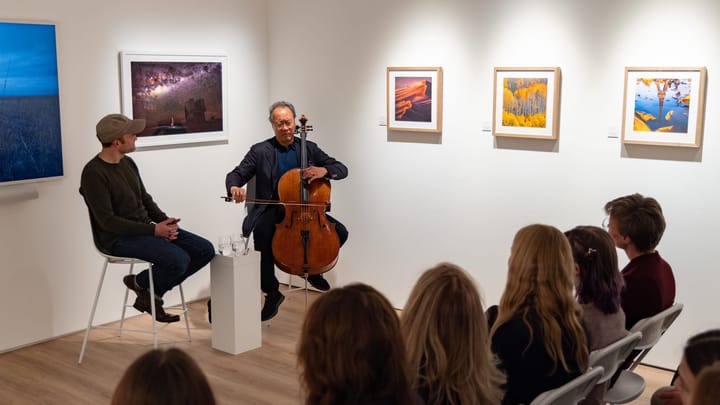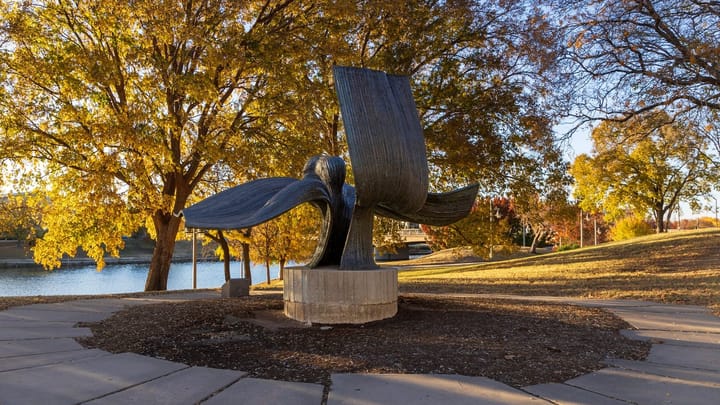Unplanned conversations & unexpected correlations: Taylor McQueary & Yulla Faun Vega at Art House 310
The two artists explore stillness and vibration in a joint exhibition, on view through September 21.
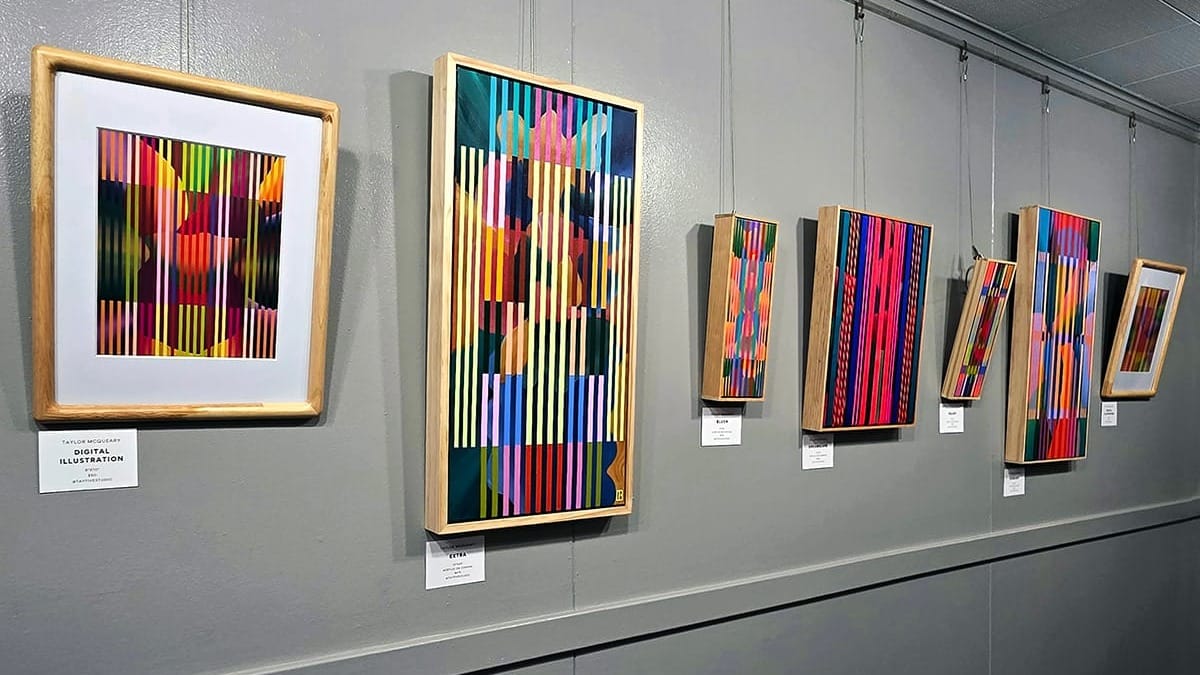
Art House 310 owners Angie and Rhett Evans have been pairing artists across their gallery’s two connected rooms for the past five years. Moving between these spaces invites visitors to consider differences and complementary aspects of each artist's practice. This September, the gallery features the work of Taylor McQueary and Yulla Faun Vega — two artists engaging in a vibrant conversation.
Taylor McQueary’s practice bridges the worlds of painting, industrial design, and graphic design. She weaves together images and forms into formal explorations with a harmonious sensibility. “Nectar” provides a good example of her playful visual games. The 48-by-24-inch panel depicts a floral abstraction with a uniform surface, smooth transitions, and hard edges. McQueary covers this organic motif with a grid of three-dimensional cells, identical in size and construction. These cells give the artist curved and flat surfaces where she can experiment with color relationships, using both muted and saturated tones. As in many of her works, color plays a key role in softening the contrasts between opposing forces in her paintings.
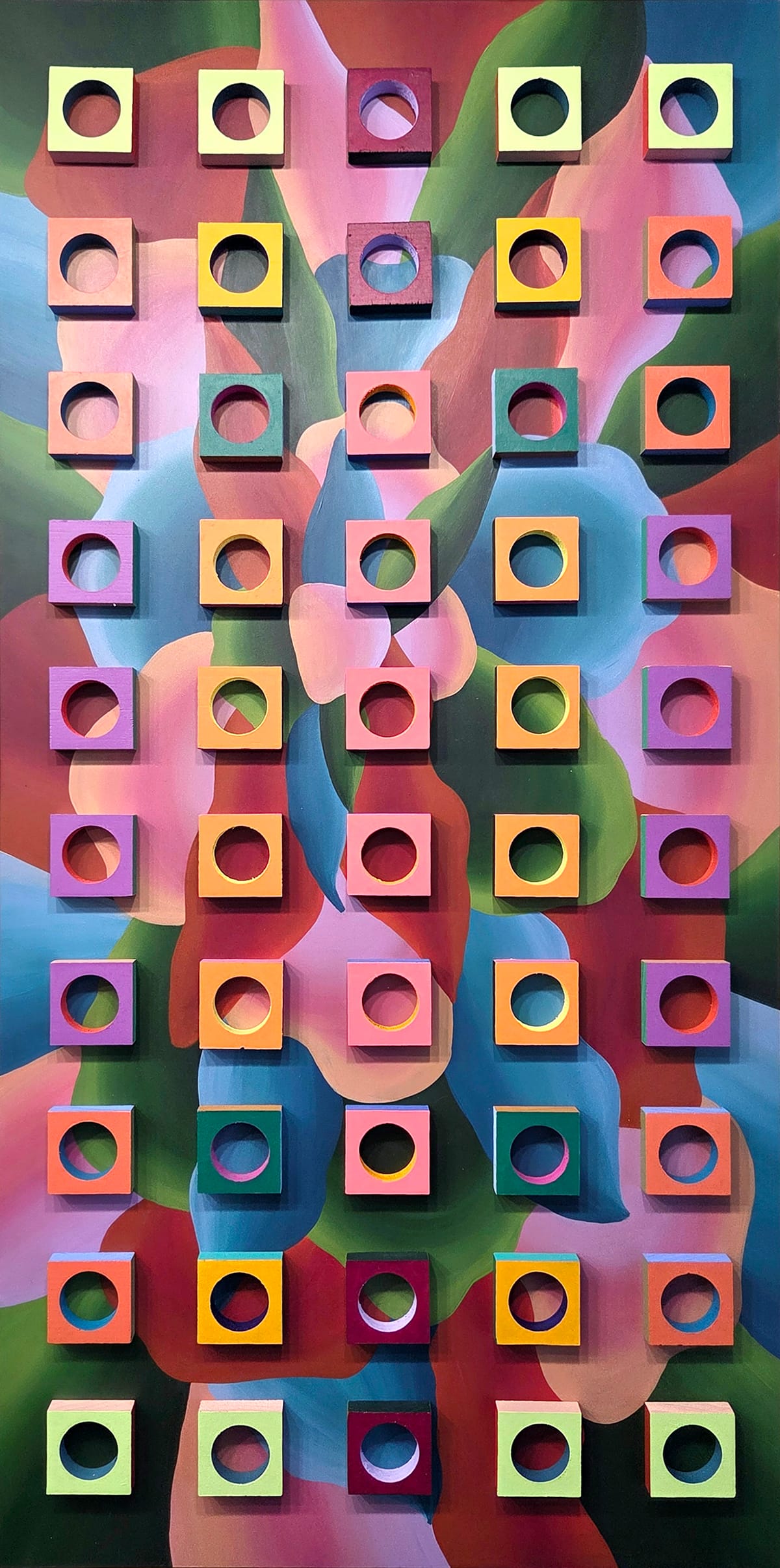
“Dreamscape” takes this 3D versus 2D investigation in a slightly different direction. Here, McQueary overlays the organic composition with found straps and cords. These elements with mass-produced patterns and colors do more than harmonize with the underlying acrylic painting. They have “real world” associations: camping, pet supplies, or ratchet straps. Pairing these tactile experiences with the indirect world of soft abstraction activates both, elevating the mundane materials and personalizing the painter’s stylization.

With a somewhat more uniform composition, “Haze” brings McQueary’s influences to the forefront. She shares in her artist statement that the floral paintings of Georgia O’Keefe are a major inspiration for her. Like many of O’Keefe’s well-known works, in this piece McQueary uses subtle modulations of color for maximum effect. Again, she interlaces organic forms into a symmetrical network of vertical lines of varying thicknesses. This tight framing within the confines of the canvas could make for a rigid painting, hemming the imagery into a predictable pattern. Instead, the artist’s careful color shifts allow for vanishing intervals and vibrant figure/ground alterations.
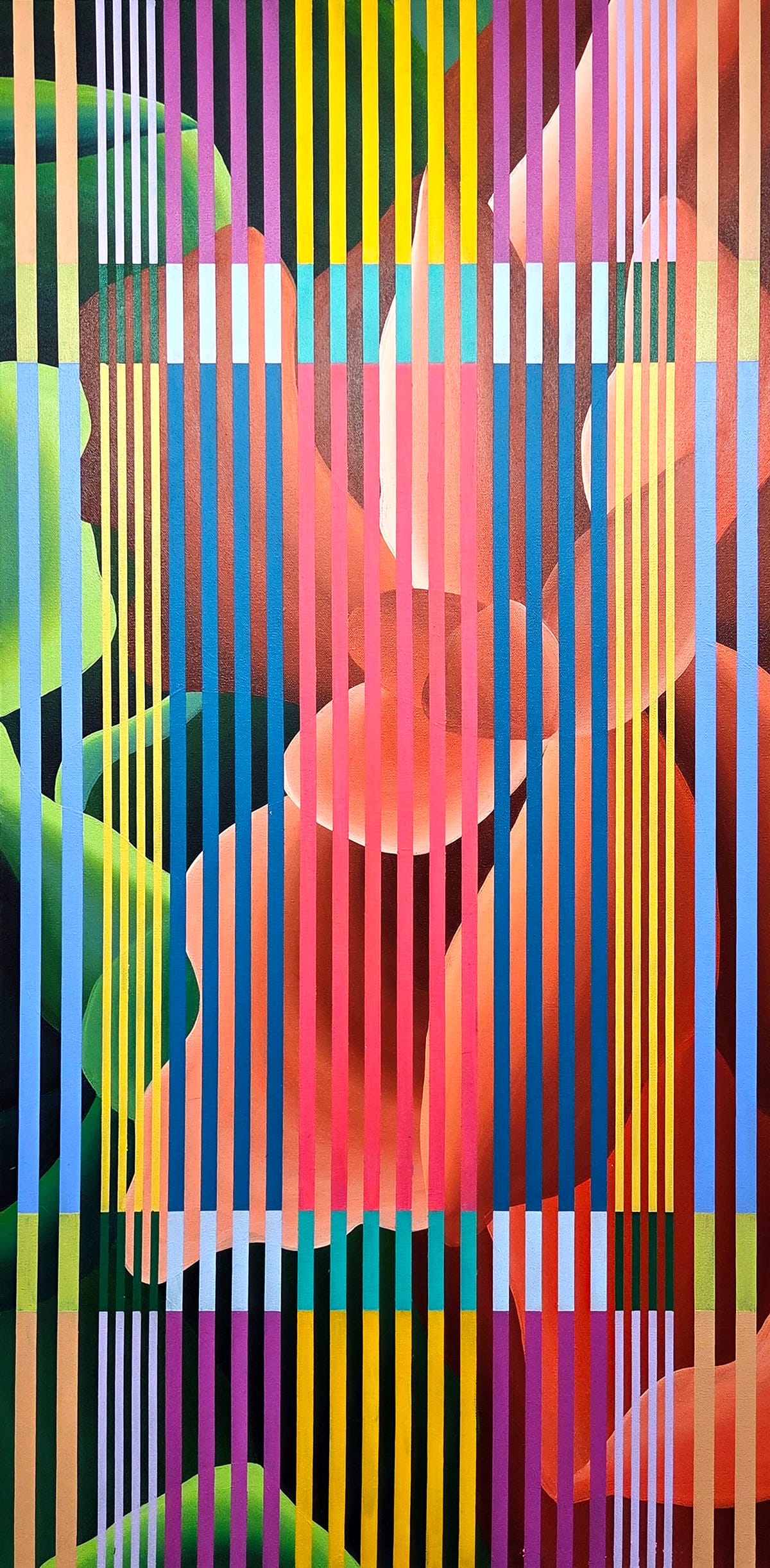
A different sense of vibrating imagery is apparent in Yulla Faun Vega’s “House 3,4,5.” In this translucent interior scene Vega brings together layers of information from various domestic layouts. There are also hints of the outside world we can perceive through the see-through walls: the artist stencils in birds and she renders symbolic cloud forms across the composition. She includes handwritten notes from a personal goal setting list: “look for a job,” “figure out daycare,” “fix car.” It is in these notes that we are clued into a deeper experience of instability. Vega is not just trying to fix their orientation in a shifting room. She refers to much bigger systems collapsing around this domestic scene.
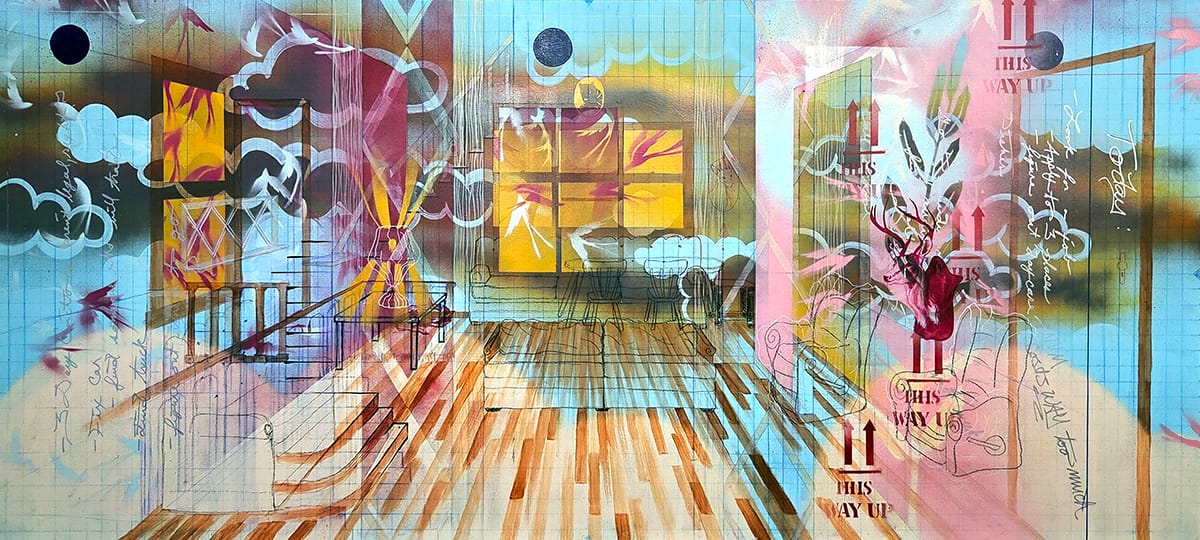
In her artist statement, Vega writes “Transitional homelessness is the central idea of these works. It doesn’t mean fully homeless, but it does mean lacking a place to settle and call home.” Through her work, we encounter frequent references to nesting and flight mixed with domestic anchors. This is concisely seen in “Keys Needed” and “Unlocked,” two smaller works. In both pieces, she uses her excellent drawing skills to render door hardware, surrounded by more ephemeral feather and twig arrangements. These are further nested in solid, ornate frames that contrast with the chaos they contain. There is a real contradiction of relationships here, and even a knowing, ironic shrug about domestic expectations, safety, and uncertainty.

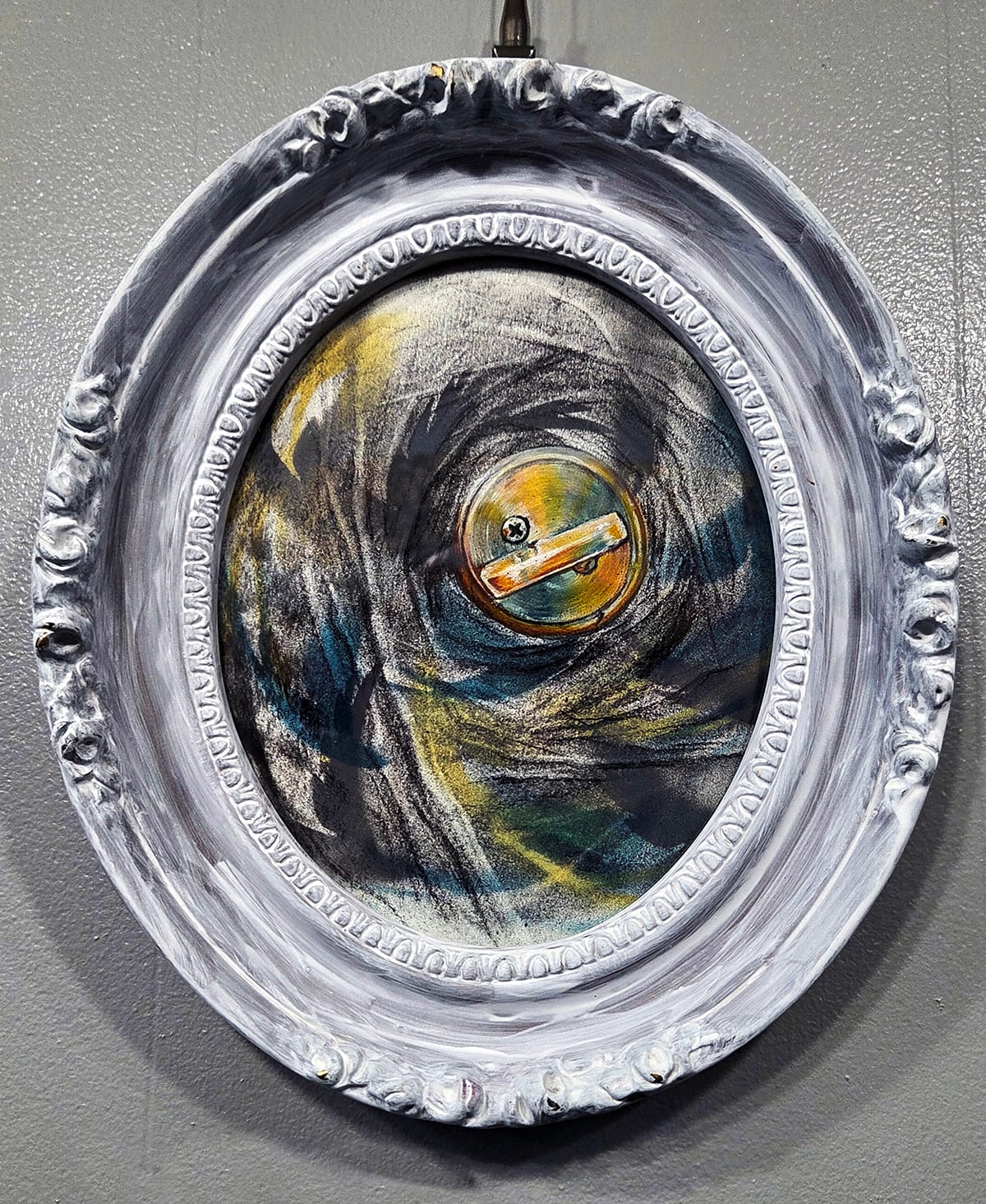
These heavier concerns are balanced in Vega’s work by images that appear more weightless or even transitional. She utilizes a portal motif across several pieces, including “East Portal Rising.” Here, swarming birds dissolve into a nest form that surrounds a glowing warmth. The title hints that this central opening could be a new possibility on the horizon, perhaps symbolic of the perpetual hope that drives the quest for home. In her artist statement, Vega emphasizes the importance of forming tight communities in the midst of unstable circumstances, “in which people mutually support and check in on each other while we learn to ask for help — sometimes over and over.”

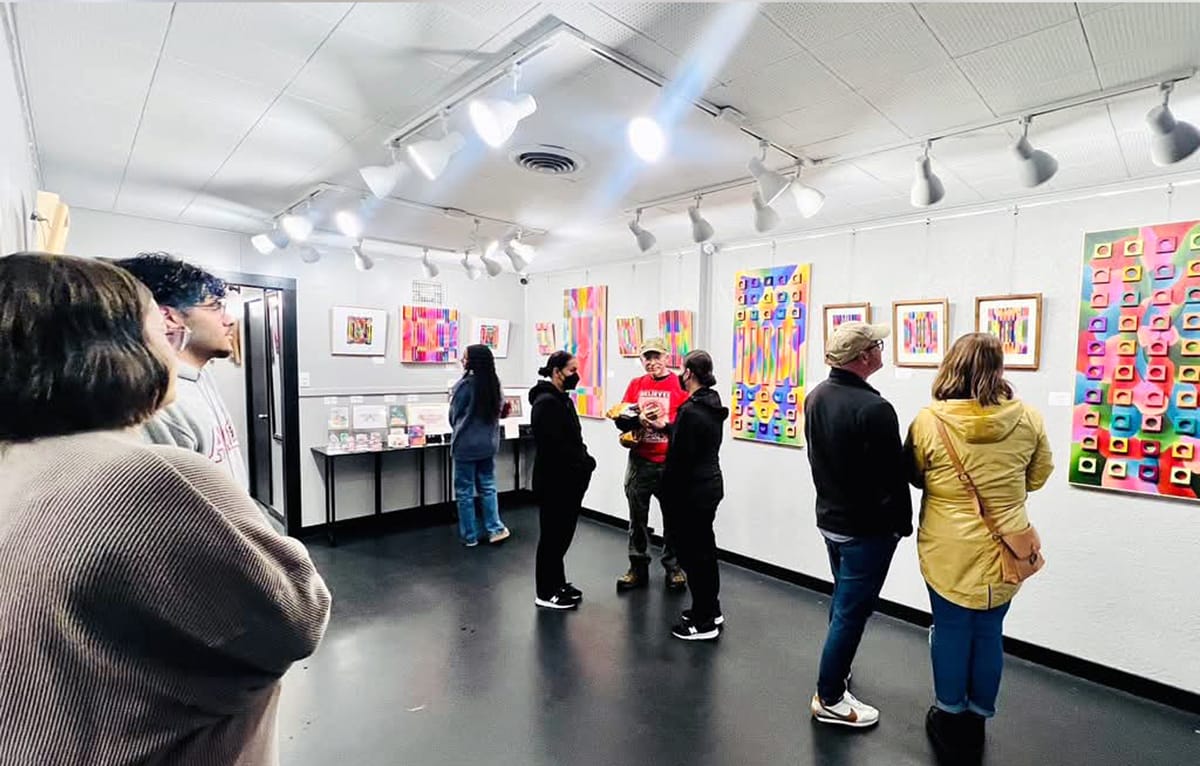
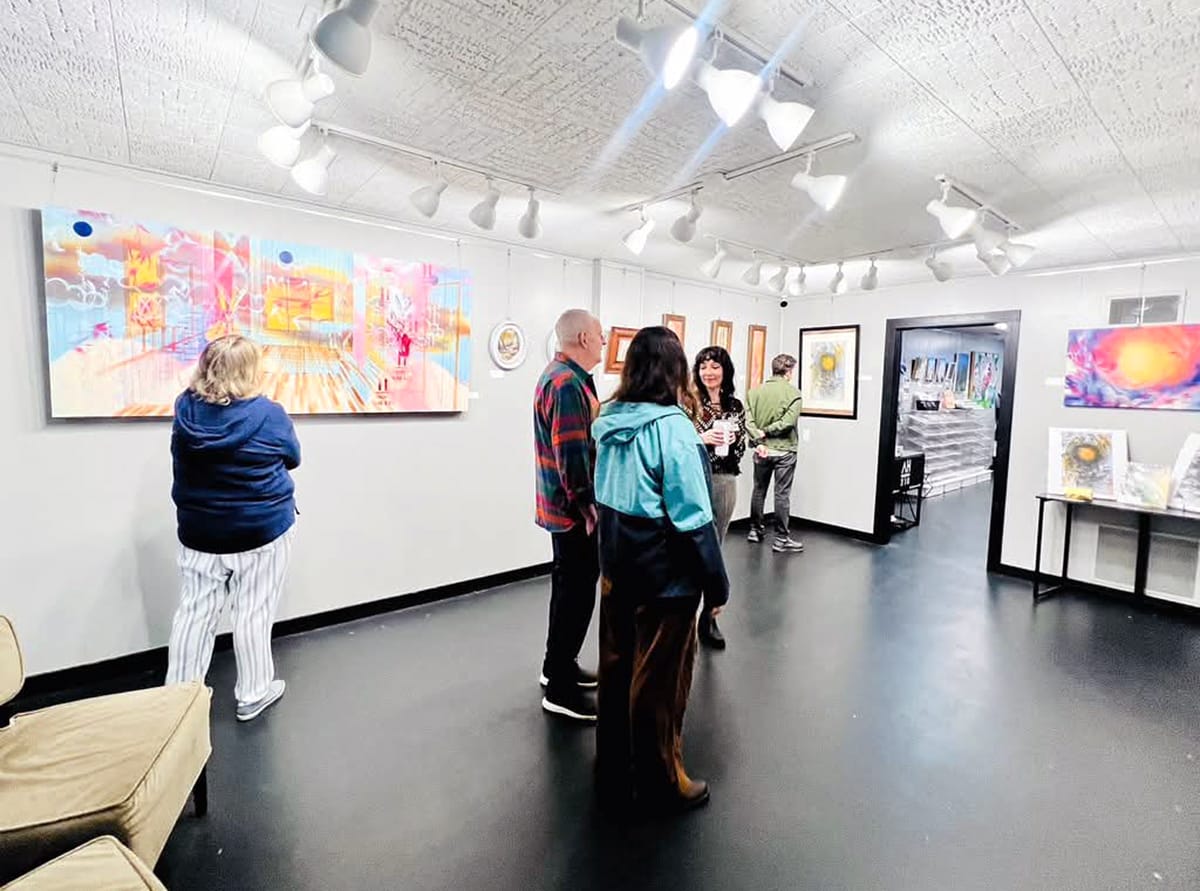
Art viewers gather at the opening reception of Taylor McQueary and Yulla Vega’s exhibition at Art House 310. Photo courtesy of Art House 310.
The magic in a two-person art exhibition happens when unplanned conversations and unexpected correlations occur. These two artists are driven by different conceptual concerns, some formal and some narrative. Still, surprising overlaps come to light.
For instance, look for how each artist explores stillness and movement as well as vibration and energy. Neither artist is content to work in one pictorial language. Watch for how and why they choose to layer languages in their work in order to access something bigger. Both artists invite you to spend time looking at the margins between structures as they seek new territories.
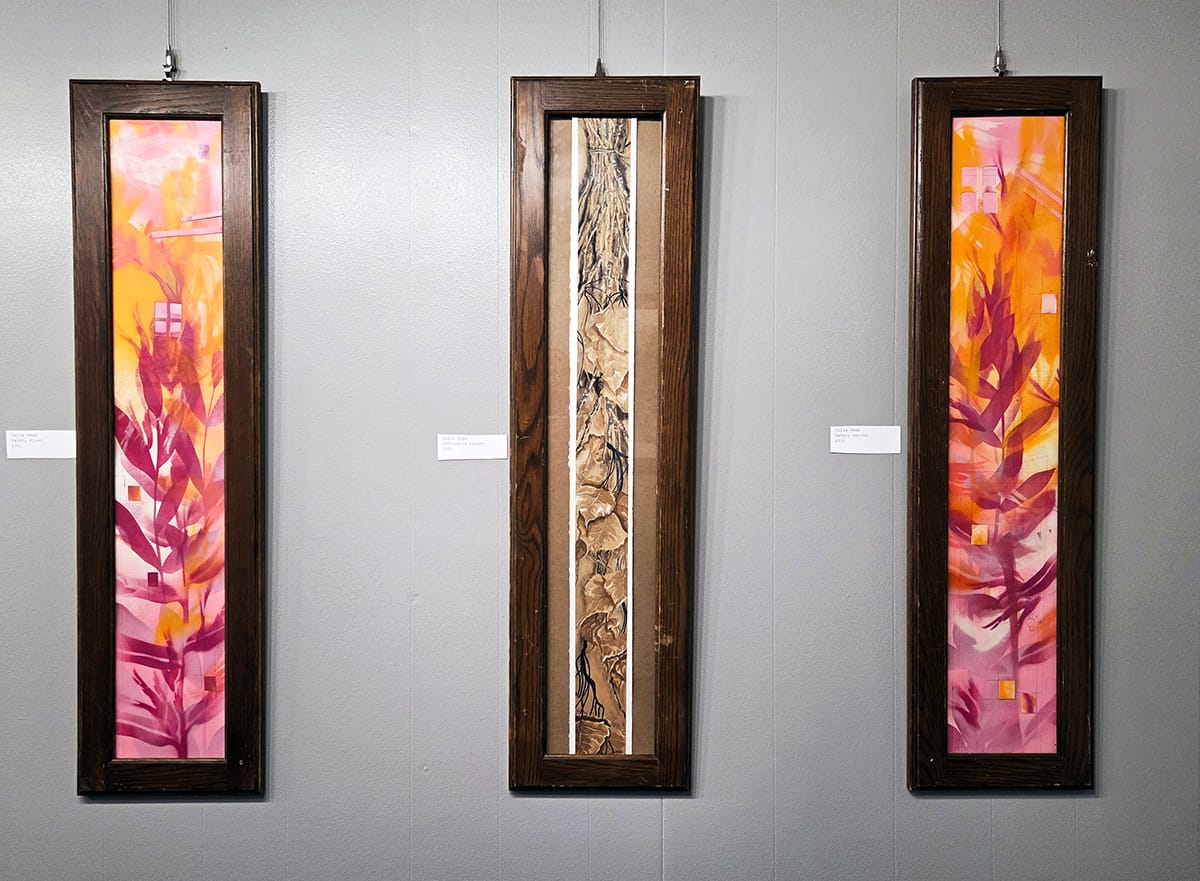

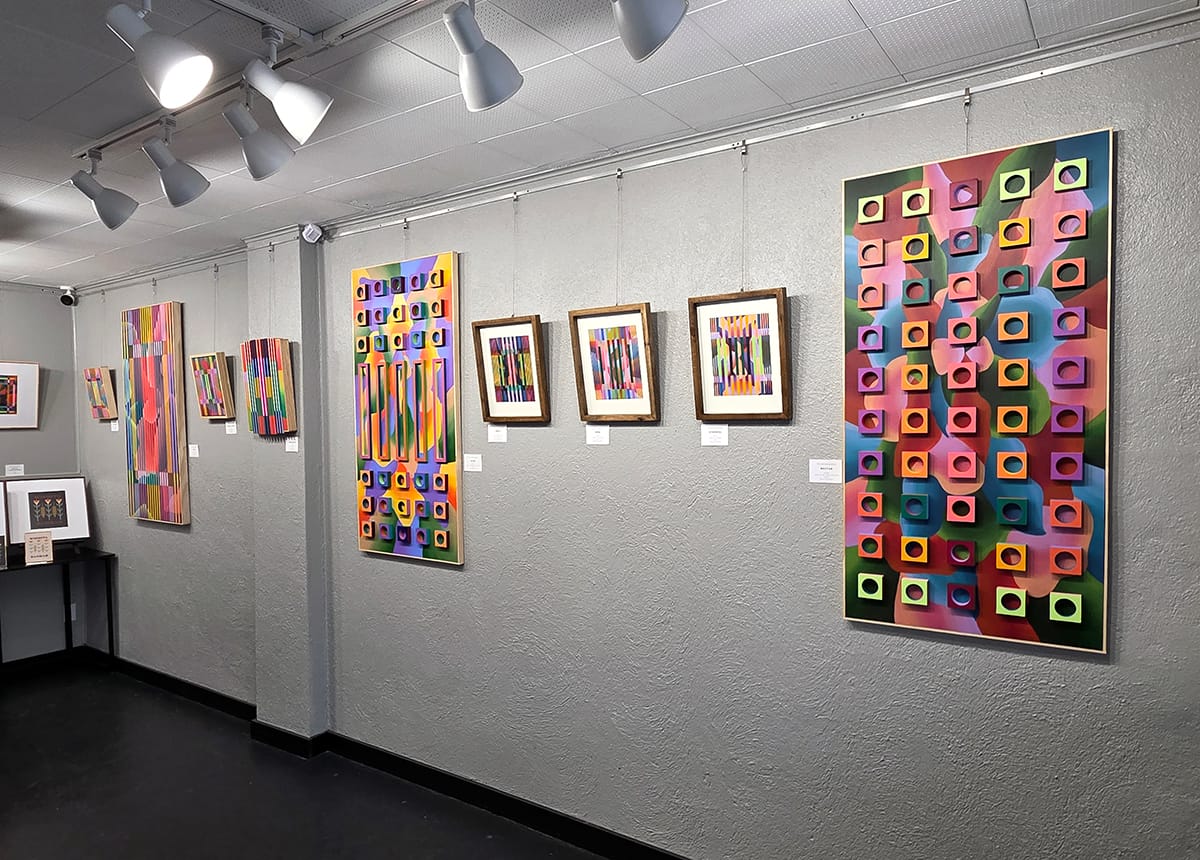
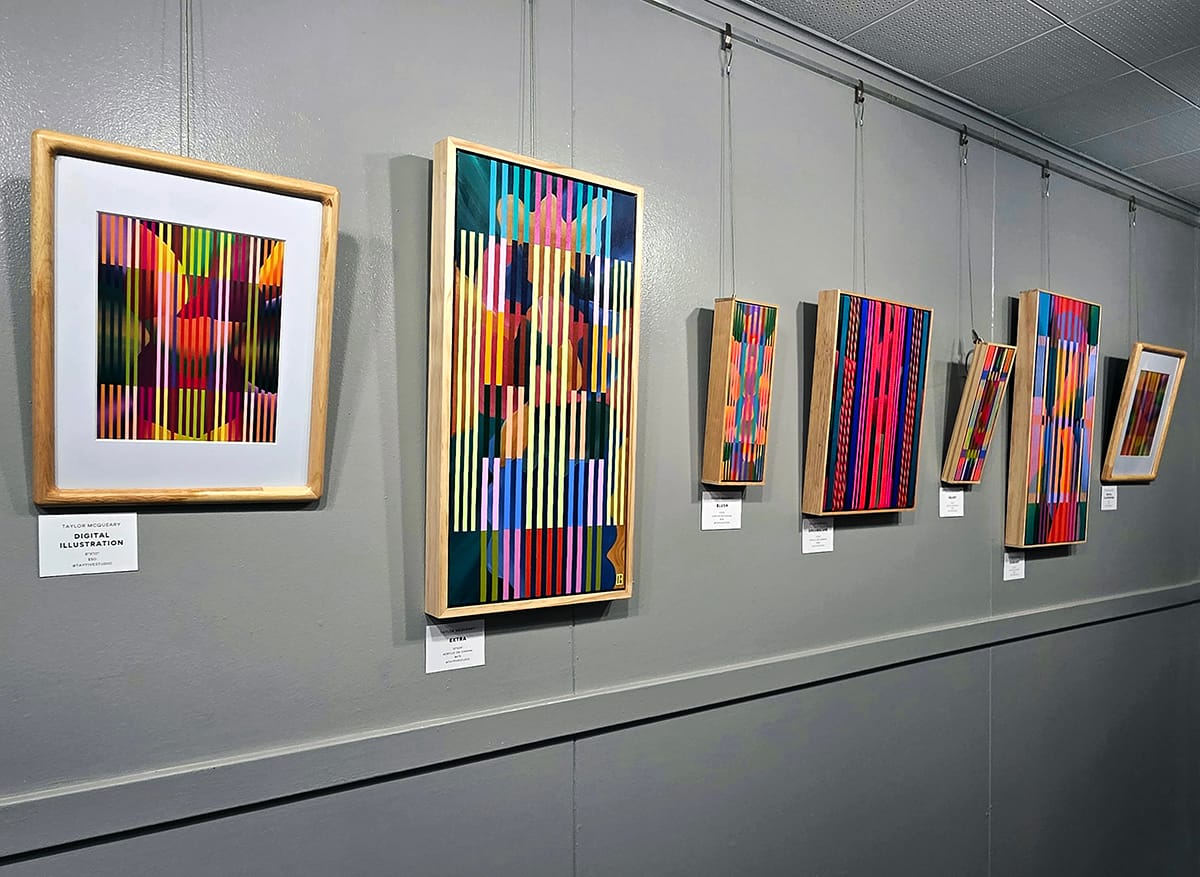
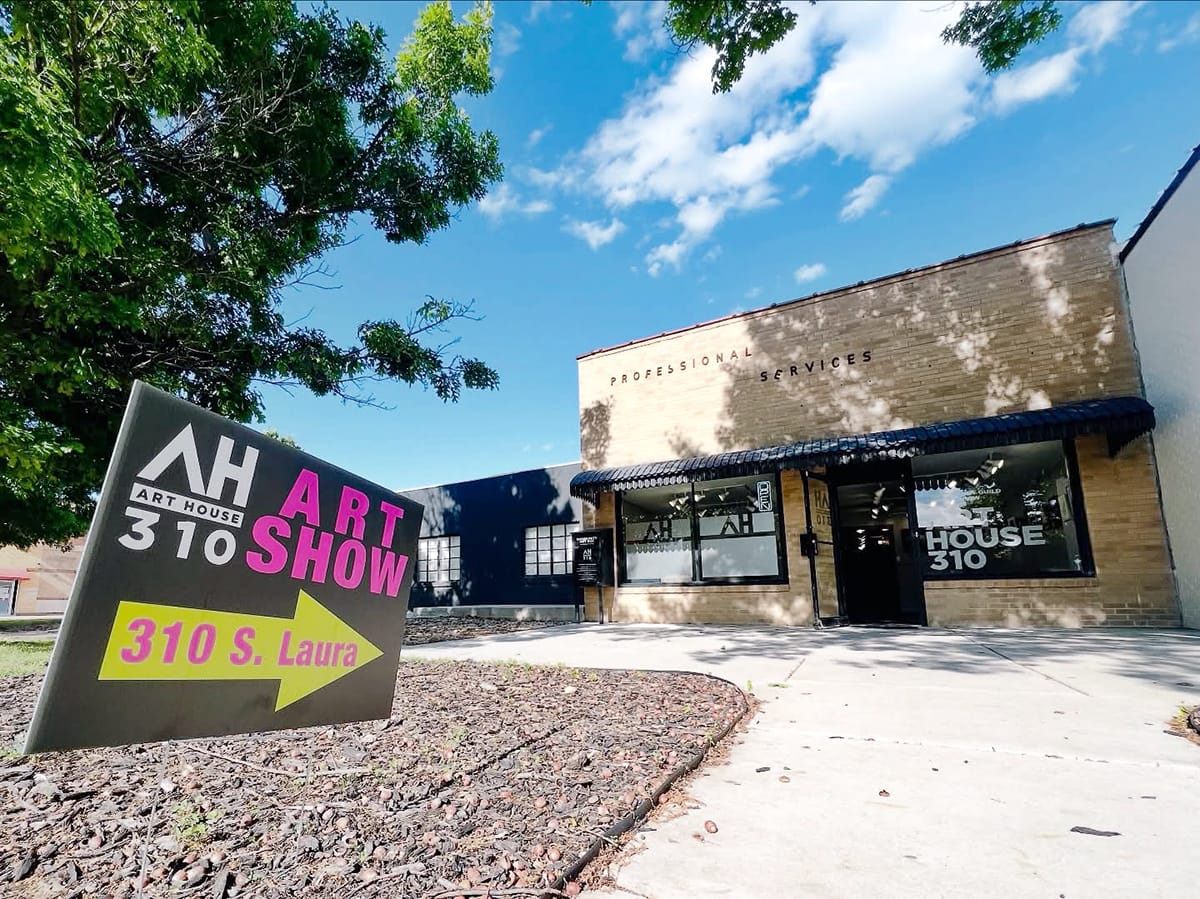
Installation views of the exhibit (photos by Kevin Kelley for The SHOUT) and a view of the exterior of Art House 310 (photo courtesy of Art House 310.)
The Details
Taylor McQueary and Yulla Faun Vega
September 5-21, 2025, at Art House 310, 310 S. Laura St. in Wichita
Art House 310 is open during regular posted gallery hours or by appointment.
Gallery hours are generally 6-9 p.m. Tuesdays and Thursdays and 1-4 p.m. Sundays. Check the gallery's Facebook and Instagram pages to confirm before planning your visit.
Kevin Kelly is an artist and educator. He lives and paints in Wichita and teaches art at Butler Community College in El Dorado, Kansas.
❋ Derby man has the kind of voice that turns heads — and chairs
❋ Socializing while sober: how some Wichitans are cultivating alcohol-free communities
❋ As a small creative business closes, the owner mourns
❋ Painting through it: Autumn Noire on 20 years of making art
❋ How a guy from Wichita resurrected 'Dawn of the Dead'
❋ Bygone Friends University museum housed curious collections
Support Kansas arts writing
The SHOUT is a Wichita-based independent newsroom focused on artists living and working in Kansas. We're partly supported by the generosity of our readers, and every dollar we receive goes directly into the pocket of a contributing writer, editor, or photographer. Click here to support our work with a tax-deductible donation.

